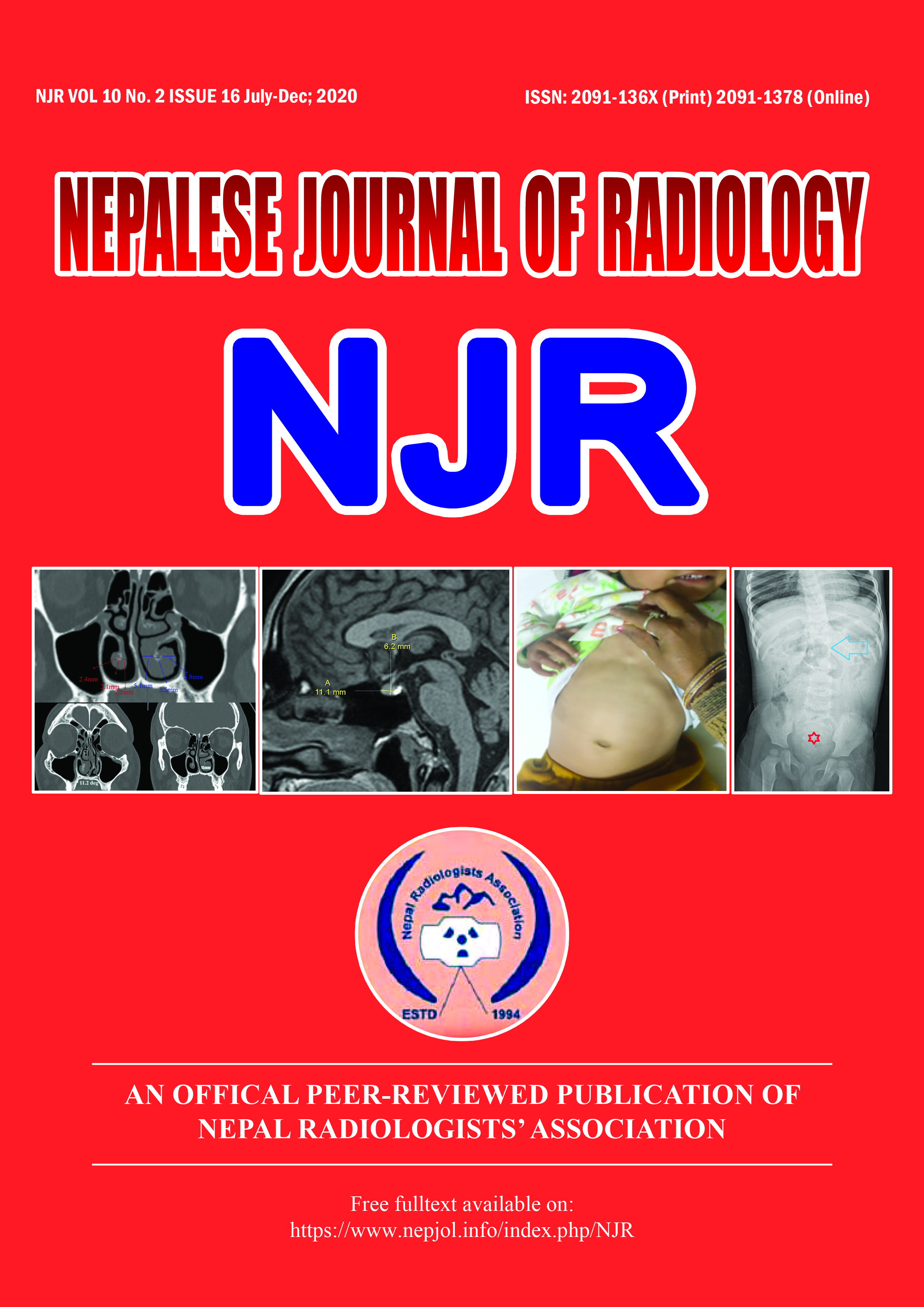CT Evaluation of Optic Nerve Sheath Diameter in Traumatic Brain Injury and its Correlation with Rotterdam CT Scoring
DOI:
https://doi.org/10.3126/njr.v10i2.35973Keywords:
Brain Injuries, Decompressive Craniectomy, Intracranial Pressure, Optic NerveAbstract
Introduction: Elevated intracranial pressure is one of the fatal events associated with traumatic brain injury. Optic nerve sheath diameter measurement is an indirect way of assessing intracranial pressure. Optic nerve sheath diameter and Rotterdam score are prognosticators of traumatic brain injury. This study aimed to measure the optic nerve sheath diameter in the initial CT scan and correlate with the Rotterdam score.
Methods: Retrospective analytical study comprising consecutive patients from July 2019 to December 2019 who underwent decompressive craniotomy for traumatic brain injuries were included. Optic nerve sheath diameter was measured 3mm behind the eyeball in axial images and Rotterdam CT Score was done on the same CT image in another setting. The receiver operating characteristics curve was plotted to measure the accuracy of optic nerve sheath diameter in predicting the severity of traumatic brain injury.
Results: Sixty patients with a mean age of 42.5±14.6years were included. The mean optic nerve sheath diameter with Rotterdam Score of 1, 2 and 3 was 3.8±0.64mm and with Rotterdam Score of 4, 5 and 6 was 5.1±0.66mm. The area under the curve of severe Rotterdam CT Score vs optic nerve sheath diameter was 0.915 (p<0.0001, 95% CI 0.84-0.98) and spearman Rho correlation coefficient value was 0.83 suggesting positive relation.
Conclusion: Higher mean optic nerve sheath diameter was observed with a severe Rotterdam CT score. Thus, optic nerve sheath diameter of initial CT scan in traumatic brain injury cases could be an important radiological tool to rule out the presence of raised intracranial pressure.
Downloads
Downloads
Published
How to Cite
Issue
Section
License
This license enables reusers to distribute, remix, adapt, and build upon the material in any medium or format, so long as attribution is given to the creator. The license allows for commercial use.




